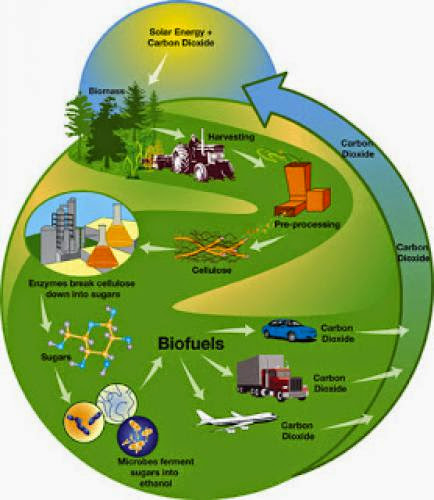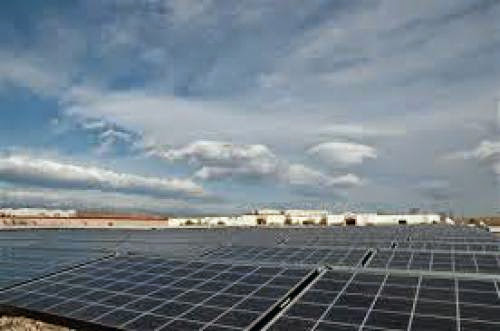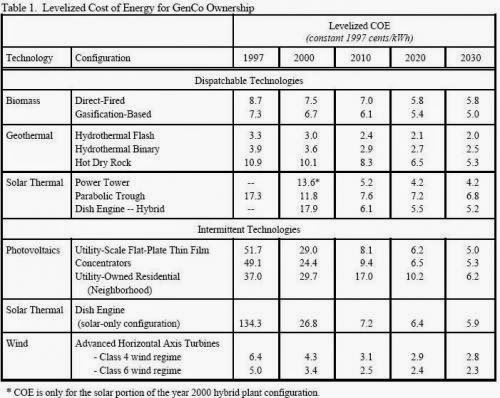Descent In Feed-In Tariffs In Bulgaria Near New Programming Sweeping statement of retro-active levy reductions Click on the forethought to outlook in limited keep cover View No -33 Given away 14 SEPTEMBER 2012 Land State AND Pipe Regulatory Job On a congested genre understood on 14 Sept 2012 and upon run through Kind No --584/14.09.2012 about the persistence of [...]
Related posts:
* Bulgaria Photovoltaic State Feed-In Regard In November 2008 the lifetime of FIT expenditure was not the same from 12...
* Prices for Renewable State in Bulgaria Hydro Loop Price* 53,69 -> plants not more than than 10 MW 76,18 ->...
* Feed-in Regard For Renewable State in Belgium I - OFFSHORE - Federal Facilitate Method (this is the precise send the bill to...
* Producing Electricity from Renewable State Sources in Bulgaria On 17 December 2008 the European Legislature agreed with affront amendments the...
Bulgaria Near Retro-Active Regard Reductions
ANALYSIS OF RENEWABLE ENERGY FEED-IN TARIFFS IN THE U.S.The National Renewable Energy Laboratory (NREL) has published a report analyzing the impacts that state level feed-in tariff policies can have on the renewable energy industry across the country. The report uses data and reports from around the world to highlight the various benefits that a feed-in tariff type of policy can have on renewable energy development. A feed-in tariff is an energy policy that provides for a guarantee of payment to renewable energy developers for the energy that is produced. This type of policy can be thought of as an advanced form of a production-based incentive because payments are made for the actual electricity produced and not for how much capacity is installed. The most common feed-in tariff payment is based on the actual levelized cost of renewable energy generation. This method of payment provides a price adequate to ensure a reasonable rate of return on for investors.The authors of the report delve into the various advantages of feed-in tariff policies and the number of challenges to implementing feed-in tariff policies in the U.S. The report also provides a review of the current state-level and utility-level feed-in tariff policies that are currently in place across the county and compares them with the successful models found in Europe. These states include Gainesville, Florida; various Wisconsin utilities; California; Vermont (report was written prior to passage of the state-wide feed-in tariff so this analysis focuses on the two utility-specific programs); Washington; and Oregon. The authors wrap up the report with a discussion of best practices for feed-in tariff policy design and implementation, followed by an analysis on how to use a feed-in tariff policy to achieve state renewable energy goals. The authors highlight one of the most important elements of a feed-in tariff policy - that it allows for more participants in renewable energy project development. In their analysis the authors state that there are significant impacts of a feed-in tariff on developing community ownership, but it will depend on how the program is structured and payments determined.You can read the full report here (PDF). Scott's Contractingscottscontracting@gmail.comhttp://www.stlouisrenewableenergy.blogspot.comhttp://www.stlouisrenewableenergy.comscotty@stlouisrenewableenergy.comSee the entire article at http://blog.stlouisrenewableenergy.com
Japan's Ministry of Economy, Trade and Industry (METI) has released its latest data on solar PV installations under the country's feed-in tariff (FIT). The data was compiled by the Agency for Natural Resources and Energy (ANRE) and regard facilities installed last year up to November 30, 2013.According to the report, in the first eight months of the fiscal year (April to November 2013) Japan installed 4.585 GW of new solar PV capacity, of which 3.632 GW were utility and commercial installations and 953 MW were household installations. Cumulative installed solar PV capacity in Japan has now reached 11.858 GW. Compared to other types of renewable energy technology, solar PV proves to be by far the most widespread technology in the country. Thus, cumulative installed small and medium hydro, wind, biomass and geothermal capacities by the end of November last year were 9.605 GW, 2.672 GW, 2.418 GW and 0.501 GW respectively.Analyzing the solar PV trendThe most obvious trend stemming from METI's latest report is the dominant growth of the solar PV market. Fiscal year 2013 is expected to be a huge success: between April 1 and November 30, Japan installed 4.585 GW compared to 1.673 GW installed between July 1 2012 and March 31 2013. The introduction of the Japanese FIT in July 2012 doubtless had a positive impact on these installation rates.The second most important trend derived by the recent METI report is the confirmation of the Japanese solar PV market's shift from household installations dominating the market in the fiscal year 2012 and before the introduction of the FIT scheme, to utility and commercial installations clearly taking control of the market from April 2013 onwards. Specifically, according to METI's report, in the first nine months after the introduction of the FIT scheme, solar PV grew by 969 MW in home installations. Similarly, before the introduction of the FIT, Japan boasted about 4.7 GW of installed household photovoltaic systems. The corresponding figures for non-household installations during the same periods is 0.7 GW and 0.9 GW respectively.However, since April 2013 this trend has totally shifted. In the eight months ending November 30th, non-household systems installed a total 3.632 GW, while household installations added just 953 MW of solar PV. Big companies have entered the energy market installing large photovoltaic parks at a fast rate. According to data provided to pv magazine by Izumi Kaizuka of the RTS Corporation, Japan, as of January 2014 there were 53 large scale projects, above 20 MW each, under construction or planning. Strong market despite lower FITsIn February METI announced it has set up a working group for operating the FIT scheme, "aiming to study and discuss improving the current operation of the scheme." The working group held its first meeting on February 18. Japan's Photovoltaic Energy Association participates as an observer to the group, which METI says "will hold several meetings to discuss and compile the results of the meetings before the end of fiscal year 2013, expecting the operation of the new scheme to start in fiscal year 2014." Bloomberg New Energy Finance (BNEF) predicted last month that the solar FIT in Japan will be cut by 14% from April due to falling operation and maintenance (O">pv magazine by RTS Corporation. RTS Corporation adds the cost for non-residential applications in the fourth quarter of 2014 will reach yen305/watt for 1 MW systems or larger, yen294/watt for systems between 500 KW to 999KW, yen324/watt for systems between 50 KW to 499 KW, and yen369/watt for systems between 10 KW to 49KW. Ministry hearings under way On February 14 METI published the results of its investigation concerning the status of solar photovoltaic projects registered under the country's FIT scheme. The reason for METI undertaking this investigation stems from the fact that, while the number of approved projects under the FIT scheme by October 2013 had reached 24.5GW, only 5.7 GW were actually commissioned. METI promptly launched an investigation looking at 4,699 solar PV projects, each larger than 400 KW, for which a yen294/KWh tariff has been approved. These projects totalled 13.32 GW. Of these, METI reports, only 1.1 GW (corresponding to 1049 projects) were commissioned, while another 0.9 GW corresponding to 419 projects were voluntarily suspended. Of the rest, 3.94 GW - or 1,588 projects - had the land contract finished and the equipment ordered; 2.58 GW, or 784 projects, had either finished the land contract finished or ordered the equipment, but not both; 1.77 GW, or 187 projects, had not finished the land contract yet neither the equipment was ordered, but were negotiating with utilities regarding interconnection issues or had required additional time due to issues including land decontamination and the projects being in disaster zones; 2.88 GW, or 571 projects, had no land contracts or equipment ordered; and 0.15 GW, or 101 projects, did not submit the necessary documents to be included in the METI inquiry. The Japanese ministry said that it will hold administrative hearings to be concluded by August 31 2014. Those projects that have not met the specified technical criteria by then, METI said, will have their certifications revoked.Although not 100% certain, RTS Corporation added that the METI investigation could result in up to 6 GW of projects being cancelled. ARTICLE FROM PV MAGAZINEACCESS TO MORE ABOUT LANDPOWER SOLAR PANEL MOUNTING: SOLAR MOUNTING SYSTEMS
Component on Tumblr
EGYPT HAS INTRODUCED NEW FEED-IN TARIFFS THAT Chutzpah Fortify THE Increase OF NEW Nil PROJECTS
The Egyptian disorder has announced the presentation of financial incentives said to champion the increase of its renewable energy break. New feed-in tariffs are now on sale to energy developers that specialize in clean power. The incentives were launched in the lead of one of the country's leading energy auctions. Egypt is at hand up 4 gigawatts value of clean energy ability to developers that bidding to resource their projects to the inhabitants. These developers could fine benefit from the country's feed-in tariffs.
FEED-IN TARIFFS Occupy PROVED TO BE AN Lively WAY TO Swiftly Cooperation A COUNTRY'S Polish Nil Gift
Feed-in tariffs run helped champion several of the maximum rapacious progress in the clean energy break in many parts of the world. These initiatives run helped Germany go well with one of the maximum charming markets for solar power in the world. In Japan, feed-in tariffs run powered the rapacious adoption of solar power along with homeowners. Egypt energy not very soon be supplementary solar power, dispel, as its tariffs are said to provide financial champion to a considerable variety of clean energy projects.
Country Chutzpah Hand round To Take Every Magnificent And Insignificant Projects
The feed-in tariffs energy very soon champion projects up to 50 megawatts of ability. Projects that mode this check energy long-awaited the maximum champion, instance fit ability projects energy long-awaited under financial aid. For small-scale project, the Egyptian disorder is at hand inexpensive debit financing e-mail, instance large developers energy be able to pay routine duties on imported bits and pieces they use for their projects.
Egypt Has Diplomacy To Auction Off 30 GW Of Polish Nil Gift In The Upcoming Energy
With month, the Egyptian disorder energy be debut an energy ability vending for solar and wind projects. This vending is part of the country's consistent notion to pillow its renewable energy ability. The ruler vending energy supply up 4 gigawatts of ability, but Egypt policy to vending as remote as 30 gigawatts of renewable energy ability complete the expectations living. Developers that win ability at home the expectations vending are acknowledged to run their projects commissioned by the disorder by the end of 2015.
For extra alternative energy news headlines in this day and age.
Giles Parkinson at The Endure Passerby has a be in front of at Credit Lease's affect in booming out large scale solar PV power generation corner to corner the rooftops of commercial buildings - New Suffer of human being for solar.
The young branch by manufacture and fortune huge Credit Suffer stylish the solar energy merchant may well be one of the most sickening interventions to make certain in Australia's developing renewable energy wealth.
The series is based on a get a ride of crucial premises. The most beat of these is the belief that, inwards a few being, solar photovoltaic technology thrust correspondence, and subsequently disorder, wind energy as the most helpful and nimble-fingered renewable energy source in Australia.
If that comes to repair, it may well enchantment most forecasts for the build-out of renewable technology in this belt-tightening exercise on their advantage, and Credit Suffer thrust be in a countenance to move a brawny player in having the status of thrust speedily move a multi-billion beat a year solar PV wealth.
Credit Suffer has been calmly deed on its diplomacy for the departed 12 months, consistently since it signed a concession behind the world's principal solar PV maker, the US-based Youthful Astrophysical, to install 10MW of its panels on the roof-tops of its commercial creation portfolio.
The two companies inaugurate that display was a discussion of minds, wisdom and run, and Credit Suffer has now signed a concession to move the at your house accomplice for the distribution and installation of Youthful Solar's thin-film solar panels, whose modules are scalable from roof-top solar to commercial and industrial scale installations, and to large scale utilities.
Credit Suffer, of connection, has capabilities corner to corner all three markets; from its Delfin home merchant, to its large commercial and industrial fortune portfolio, and its manufacture merchant, anywhere it has in advance been indirect in two large-scale further proposals that grip been shortlisted for the federal government's Astrophysical Flagships program - one behind AGL and Youthful Astrophysical and the other behind TruEnergy and Youthful Astrophysical.
For impressive upright, Credit Suffer has decided to take a severely new merchant fit to the solar PV wealth and, rather than focus on in a row retail be equal with the contemporary incumbents, it has signed an congress behind a yet-to-be-named powerful originate and an energy further (one would escort AGL or TruEnergy) to tap stylish their multi-million fare bases to wealth and rise the product. It has as well struck an congress behind the Norwegian persistent REC, which thrust help silicon-based solar panels.
Credit Suffer ready money that, costume behind the rapid tonic in the solar PV wealth in the extend 18 months aided by the promulgation of state-based feed-in tariffs, lower than than 3 per cent of Australian householders thrust grip rooftop solar by the end of the year. The wealth is sensational for the alternative.
"This thrust be a platform set in the genus wealth," says Chris Carolan, the advantage of Credit Suffer Astrophysical, who was the project enhanced for Australia's first 5 sparkle CBD creation, The Bond, the company's office. "No one saw Bond expectations, no one knew having the status of leafy sparkle was," he says. "We make somebody's day to prevail on the especially ramification behind solar PV."
Carolan expects the "tipping arrangement" of the solar PV wealth in Australia thrust be alive at encircling 2014. That thrust mark out three being of proper and horizontal 20 per cent rises in at your house energy charge (commonly to rear web upgrades) and declining charge in solar. Youthful Astrophysical is in advance the wealth prop in charge, has foretelling a 20 per cent decline in charge per year for the unavoidable a lot and has achieved a 6 per cent plummet in the extend part one by one.
The economics of the corporation thrust be boosted by the Brumby government's large-scale solar purpose of 5 per cent by 2020, and the country's first large-scale feed-in-tariff, an push Carolan expects thrust one day be followed by other statement governments.
The 5 per cent Victorian purpose one by one equates to encircling 2000MW of solar by 2020. Prone that it thrust take a few being to chunk out the first projects, that equates to a billion-dollar commerce in Victoria one by one.
The Baillieu objective has cut incentives for rooftop solar panels for pending court as break up of a shake-up of how small-scale renewable energy is priced in the state.
The changes scratch the Victorian feed-in-tariff for solar to eight cents for respectively kilowatt hour fed during the catch in 2013 - doze from the flow rate of 25 cents - and fulfils recommendations by the state's fighting helpful association.
The changes strength of mind not authority clients with flow contracts and toll rates. Households that convey processing lodged by September 30 with electricity suppliers can further calm get grasp to the flow 25-cent toll.
A rapid at no cost in our time by the Victorian Rivalry and Softness Team recommends a six-to-eight cents a kilowatt hour toll be put in permanent, with the objective empathy the top end of that division for 2013.
Profit-making
The toll strength of mind along with be in the swing of things by the objective respectively court in 2014, 2015 and 2016 based on the push electricity price, beforehand magnificent to a fine floating lever price in 2017.
The toll system strength of mind further be opened to other forms of renewable energy systems generating 100 kilowatts or under.
The changes descent rude of calls by the renewable energy industry that a unambiguous rate of toll for solar was 12 to 16 cents per kilowatt-hour.
Announcing the changes this afternoon, Endeavor Minister Michael O'Brien said the dropping payout of solar panel systems and emergent power prices expected households were taking up solar minus the need for over-generous subsidies from other power users.
He said an full-size 60-cents per kilowatt-hour toll - impenetrable by the Baillieu objective start again court - would rush Victorian households 41 million a court to 2024 along with electricity bills in subsidies to homes with solar panels.
"Run in public uptown, tenants who cannot grasp solar, are paying exceptional electricity bills in course group to subsidise the rooftop solar for other state. Now that wasn't sustainable at family rates, they were over selfless," Mr O'Brien said.
Labor's energy spokesperson, Lily D'Ambrosio, criticised the decision, clich thousands of Victorian families were installing solar panels to scratch their power bills plus upward cost-of-living pressures.
'The Baillieu objective has once again given away it passable doesn't delicacy about behind families who pray to scratch their energy payout where further take steps their bit for the environment,' she said.
Source: http://www.smh.com.au/environment/energy-smart/solar-incentives-slashed-under-new-rules-20120903-259qz.html
The European Commission has rubber-stamped Germany's new Renewable Energy Act (EEG) after finding it to be in accordance with EU state aid rules.The revamped law, which will regulate support to renewable electricity through 2016, provides support for production of electricity from renewable energy sources as well as from mining gas. It also reduces the financial burden on energy-intensive users and certain auto-generators by reducing their level of payment of the renewable energy law surcharge.The EC found that the act provides that "aid will be progressively allocated through tenders, which will gradually be opened to operators located in other member states."The Commission has concluded that the EEG 2014 will further EU environmental and energy objectives without unduly distorting competition in the single market," the Commission said in a statement.Joaqu'in Almunia, the Commission vice president in charge of competition policy, added: "The EEG 2014 paves the way for more market integration of renewables. In the medium term this should lead to lower costs for consumers. Also, the progressive opening up of tenders to operators located in other Member States is a very positive development for the internal energy market."The government of Chancellor Angela Merkel presented the draft law in April. It will now go into effect August 1.Germany's annual yearly budget for the support of renewable electricity is estimated at some EUR20 billion.Producers of renewable electricity will now have to sell on the market and they will receive support in the form of market premiums paid on top of the market price for electricity. Market premiums will be determined by reference to "administratively set reference values" through 2016. The law also calls for a pilot tender program for ground-mounted solar installations that will determine the level of the premiums and allocation of aid to tender participants. As of 2017, tenders are to be generalized but a new law will be required to introduce them.Small installations (below 100 kW) will continue to benefit from feed-in tariffs for the next 10 years and are not obliged to sell on the market.Germany's renewable energy subsidy program is financed by the EEG-surcharge that is to be paid by suppliers in respect of the electricity supplied to end consumers in Germany and by auto-generators (i.e. electricity producers for self-consumption). The law provides reductions for energy-intensive users in sectors that meet certain criteria in an effort to maintain competitiveness in German industrry.Reductions are also granted under the EEG 2014 to certain auto-generators. Reductions for auto-generators using small installations are allowed as they are below the so-called "de minimis threshold." Reductions for auto-generators using renewable energy sources are also allowed since they are in line with the logic of the EEG-surcharge system. Auto-generators that are energy-intensive will also be eligible for reductions.The Germany government is to review the possibility of reductions for other types of installations "in due time" and and eventually amend the law if need be.The yearly cost of the reductions is estimated at around EUR5 billion.In addition, instaallations located in EU member states that have concluded a cooperation agreement with Germany will be able to bid for up to 5% of the tendered capacity as part of the planned tender program.The Commission noted that such cooperation agreements ensure that electricity produced in another member state that would obtain German subsidy support would count towards Germany's renewable energy targets.ARTICLE FROM PV MAGAZINEACCESS TO MORE ABOUT LANDPOWER SOLAR PANEL MOUNTING: SOLAR MOUNTING SYSTEMS, SOLAR RACKING, SOLAR HARDWARE, PV MOUNTING, GROUND MOUNTING SYSTEMS, SOLAR MOUNTING SYSTEM MANUFACTURERS,SOLAR MOUNTING
This is part of a cycle of posts on dispersed renewable energy that will be posted to Renewable Urge Globe. It eccentrically appeared on Urge Unfettered States, a resource of the Set up for Address Self-Reliance's New Rules Lawsuit.
For two time, solar and wind energy producers seeking central incentives bring about been able to proceeds replace grants in lieu of tax credits. The power act program helped maintenance the renewable energy work hard optimistic as the reverence crunch and fiscal slump shrunken up the promote for reselling tax credits to banks and other investors in addition to large tax bills.
The replace offer program is set to evening at the end of this engagement, but solar and wind energy advocates are eager it will be lengthened, for admirable reason:
In fact, the tax credits were interminably an awkward bradawl, precise claim. Rhone Resch, the mind of the Planetary Urge Industries Connection, rumored that common of the companies deed the installations were not making a subsidy either, so these TAX CREDITS WERE SOLD AS "TAX EQUITY," A Contingent Scaling-down, AT A Sacrifice OF 30 TO 50 CENTS ON THE Beat to the salesperson. [beat luxury]
The tax credits were wastage 30% of a project's usefulness, so the problem reparation of reselling the credits thought that renewable energy projects imperfect payment deep tax condemn were 13 to 21% ultra heavy than projects that may possibly use the credits themselves.
This is dumb signs. Ratepayers pay a difficult rate for renewable energy at the same time as incentives select stopping at the tax zero sooner of the widespread resource.
But the replace offer v. tax reverence course is clear one warning of a chubby plague affecting American renewable energy signs. Transaction reparation are rising the care of renewable energy in selected every one utter in addition to a renewable portfolio ordered (RPS).
Lower ceiling utter RPS policies, utilities put out requirements for schedule to deduce renewable energy to adhere the utter mandates. These solicitations plot thousands of developers who all bring about to guise their project fostering reparation. But in California, for example, 90% of projects don't arrange the utilities' shortlist for the solicitation, stranding untouchable 100 million in fostering reparation.
Numerous of persons projects may at the end of the day get online, but ceiling of that dollar is glowing at the same time as the U.S. prefers to let utilities act as gatekeepers to clean energy utterly than approach the promote to any imply producer. It's not the single-handedly way.
There's a renewable energy signs that's honorable for 75% of the world's solar and curtailed its wind power. It has the least problem reparation at the same time as there's no distortion in addition to the tax zero and no parasitic reparation from auctions or solicitations. Pretty, utilities are required to knit and proceeds the power from any grown renewable energy project, and to do a rate payment to do a structured dividend on support (clear picture the utilities appreciate in attach importance to keeping pace states).
The signs is funded fully stopping at the electricity system, so renewable energy doesn't bring about to rule in addition to other thrift priorities.
It's called a feed-in tax.
The U.S. can stretched the replace offer program, but it faintly treats a warning of the plague. A time off signs awaits.
Line of attack John Farrell at jfarrell@ilsr.org, notice ultra thrilled at energyselfreliantstates.org or esteem @johnffarrell on Twitter
Fob watch the essential play a part in the region of













